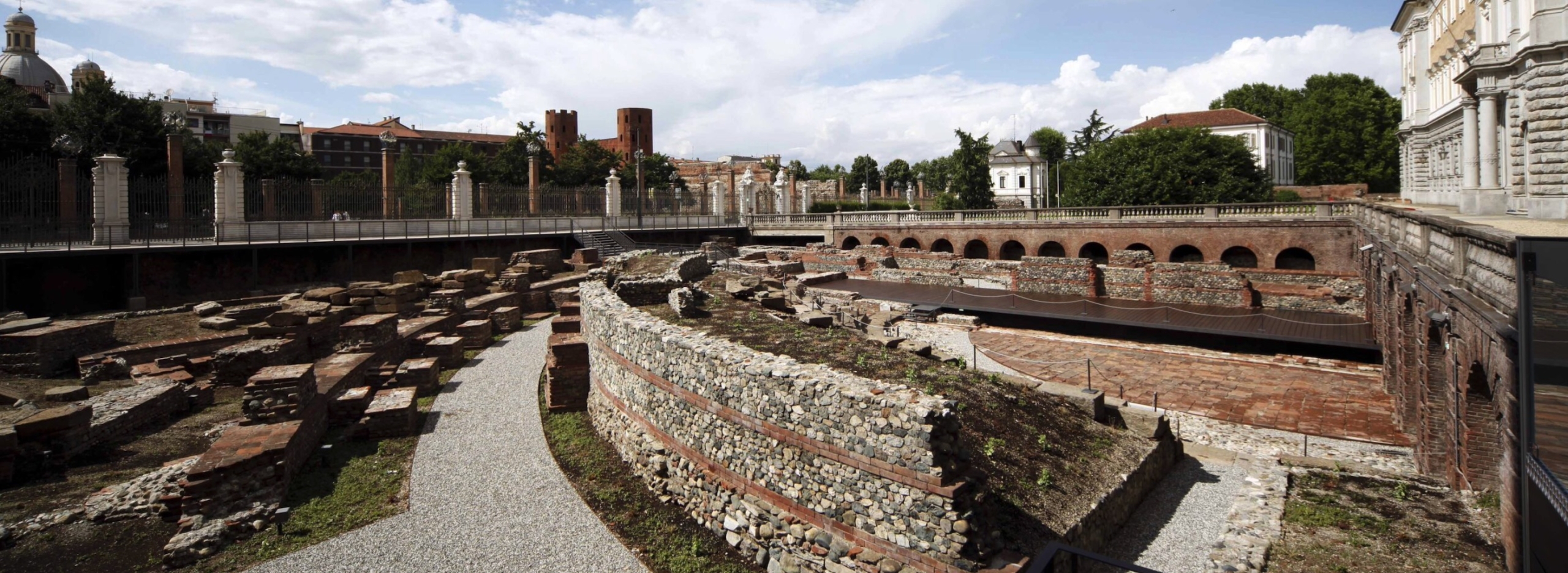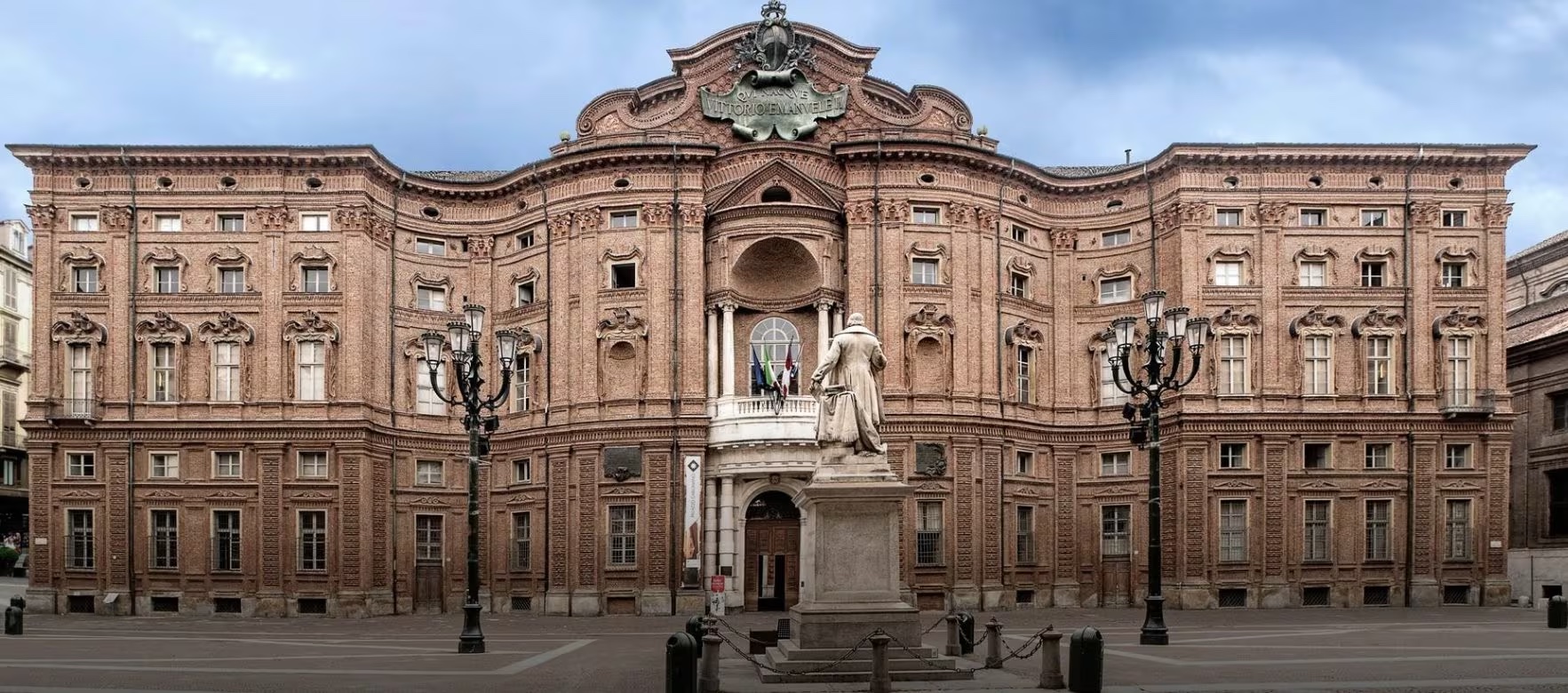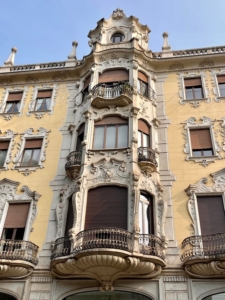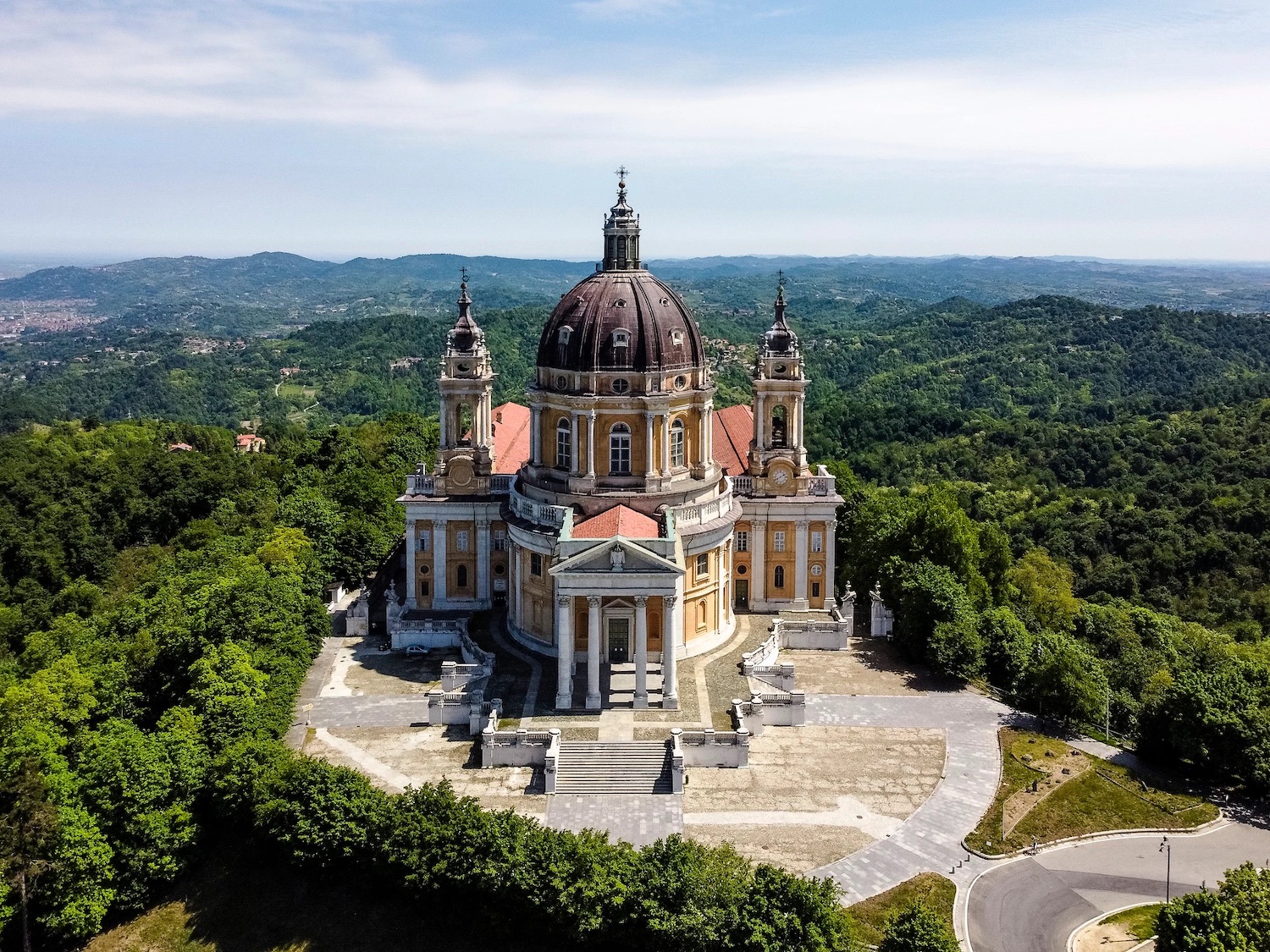THE COLORS OF ANCIENT TORINO
If one were to ask around Italy, but also to many of the Torinese themselves, what is the image with which they associate this ancient city many would simply answer “grayness ”and this is probably due to the image that this historic city has built up over the last century, closely linked to the automobile industry and to a kind of monotony of everyday life. The devastating effects that traffic, smog and neglect inevitably cause in large cities have also negatively affected Turin, which has nonetheless shown great sensitivity and care for its historic buildings and most important works.
A closer look will reveal that Turin boasts an extremely sophisticated coloring tradition where even in the past great importance was attached to urban planning and the coloring of building facades, a tradition that has always remained alive in this city from the early 1600s until today, where the color plan of the City of Turin is one of the richest and most complex in our country.
The History of Turin
From Origins to Today
The origins of Turin date back to the 3rd century B.C. when the Taurisci, a people from southern present-day Germany, settled in this area of northern Italy encouraged by the presence of the plain and the rivers Po and Dora. The first historical mention of Turin as a real settlement occurs during the famous descent of the Alps by Hannibal, who probably first tried to convince the Taurisci to ally with him against Rome but suffering a refusal to his proposal, defeated this small town before continuing his famous march.
It would be under Julius Caesar that Turin would begin to assume increasing importance on its way to becoming the first capital of Italy. In 58 B.C. the famous dictator laid the foundations for what was then called “Augusta Taurinorum” and which his adopted son Augustus completed mainly because of the geographical importance this city had by boasting privileged access to Gaul. Precisely because of this extremely strategic location but also very close to the border valleys, over the centuries Turin was often a fortified city with large city walls and a predisposition more to war than to art and architecture. Even today among the streets of the modern city it is easy to come across parts of the ancient city walls, both brick walls built during the Roman Empire and those of the famous Citadel of Turin built in the late 1500s.

Ancient Roman Theater of Augusta Taurinorum – Royal Gardens
Precisely because of its strategic location during the Middle Ages, Turin had many influences during this historical period. After the fall of the Roman Empire, the first people to settle there for a long time were the Gauls, who controlled it until 773 when Charlemagne with his famous army settled there and put it under the control of his dynasty for almost two centuries until the arrival of the famous House of Savoy, which will make its first encounter with Turin right around the year one thousand thus beginning a history that binds this city and this lineage for over a millennium.
As the first capital of the Kingdom of Sardinia, it was precisely in the 18th century that Turin saw its period of greatest splendor but also its most tumultuous period, continually threatened by the French invasion several times foiled right on the outskirts of the city, such as the very famous siege of 1706 very well known to all Turin residents, and such as the even more famous Napoleonic invasions of 1800 where Turin and its surroundings were the site of famous battles during the Italian Campaign that made Napoleon famous.

Piazza Carignano – The First Parliament of Italy
As soon as the famous expedition of the Thousand that defined Italy in broad strokes as we know it today was over, in 1861 Turin was appointed by the parliament assembled by the renowned Turin-born Cavour as the first capital of Italy at the behest of King Victor Emmanuel II, and although over time this office passed first to Florence and then went to Rome, Turin has always retained in even the most recent history of Italy a role of first importance both in industrial and cultural terms.
The Yellow Torino
The Color Symbol of the City

Priotti Palace – Restored in Lime with Turin Yellow
In the early 1800s the very Savoys who had ruled the city for centuries by then established the “Council of Builders,” which among its many functions of controlling building works also had the purpose of giving a color plan to the city and thus deciding on the color of the exterior facades, which could no longer be chosen by individual owners but had to submit to the new rules of the Turin City Hall. Among the colors allowed, the famous “Giallo Torino” was the most popular and it was during this period that its connection with the city was renewed and rediscovered. In fact, it is assumed that initially this color was not obtained as it was later using yellow colored pigments, but was the result instead of the natural color of the lime found in areas of Piedmont that have a yellowish tendency.
Although this period of extreme rigidity did not last more than a few decades, the tradition of using this color and associating it with the city has remained alive over the centuries and today Turin still retains a great sensitivity to its historical heritage and it is possible to find many historic buildings that have been restored respecting the city’s ancient color plan that sees yellow in all its shades as the undisputed protagonist and much loved by the Piedmontese, who are particularly proud of it.
If you want to learn more about this topic, read the full article on the Birth and History of the Piedmont Yellow by Antonino Longhitano
The Lime of Superga
The Ancient Materials
Superga is one of the highest hills in the city, located northeast of the metropolis it has become famous for the basilica that was built in the 1700s and became infamous throughout the country for the tragedy of the great Torino that is still remembered and commemorated right behind the main building.
The basilica of Superga has been a symbol for the city of Turin for more than three centuries since its construction dates back to 1731 to celebrate the victory of the Savoy family over the French of Louis XIV who laid siege to it in 1706 putting to the test the tenacity and resilience of the Torinese, who defended their city with pride by also taking advantage of hills such as Superga to stockpile supplies and provisions to be able to withstand days of bombardment.

The Basilica of Superga in the hills of Turin
It is precisely among the endless paths of these Turin hills that it is possible to find the famous Superga lime stones, a very ancient material that was already exploited many centuries before by the ancient Romans and played a fundamental role in the economic development of the city. These stones, once fired at about 900° is quenched with water in the famous process that goes by the name of “lime quenching.” This process gives rise to a lime of the highest quality, resistant to the passage of time and easy to apply, and for this reason the history of this material and this city have intersected for centuries and centuries.
Toward the beginning of the 1800s, with the arrival of the first industrially produced products such as Portland cement, Superga lime could not withstand the competition and its production almost completely disappeared. Only in recent decades, with the emergence of a new awareness of cultural heritage and sustainable building in general, ancient products such as Superga lime are making a comeback, especially in conservative restoration and period renovation.
The Turin Color Plan
The Enhancement of Tradition
The color plan of the city of Turin born at the end of the 1970s has in some ways taken up what was the idea of the Savoys with the Council of Builders that we saw earlier in talking about the Turin Yellow. So the goal of this initiative then was to create “order” in the colors of the city to prevent each individual owner from restoring on his or her own initiative without any supervision, thus leading to the loss of a great historical heritage and a strong loss of identity.


And so it is that today, somewhat as it was then, it is no longer the inspectors of the Savoy government but the Superintendence of Environmental and Architectural Heritage of Piedmont that coordinates thousands of construction sites, helping companies to carry out restoration work with the utmost respect for the color identity of the city of Turin, assessing first of all the historical value of the building and secondly the location and intended use.
The results of this initiative, which saw the commitment of important institutions in the area such as the CNA and the contribution of hundreds of architects, historians and artisans, are now visible to anyone who decides to visit Turin and devote some attention to the beauty of its streets and squares and where the history of which, as we have seen, this city is so rich, is not simply exploited for image but respected and carried on by tradition from Turinese to Turinese, as has been done for centuries.
The Colors and Materials of Turin
Conclusion
The very rich history of Turin’s color is told by more than 800 documents of various kinds: municipal resolutions, ordinances, letters to the mayor, appeals, architect’s reports, and much more, and the collection of these references has made it possible to carefully reconstruct the path of this city not only helping to shed light on the intriguing history of color in Turin but also providing a great contribution to modern artisans and restorers who want to rediscover and enhance the original techniques of decoration.
Today, Turin is a city that has been greatly redeveloped, and areas such as Piazza San Carlo and Piazza Gran Madre are symbols of this newfound ancient splendor and are stimuli for continued building improvements in the city, always respecting the long tradition of craftsmanship that is linked to this ancient city.
For those who would like to explore these topics in more detail, we recommend reading the book “Torino – I Colori dell’Antico” by Germano Tagliasacchi


